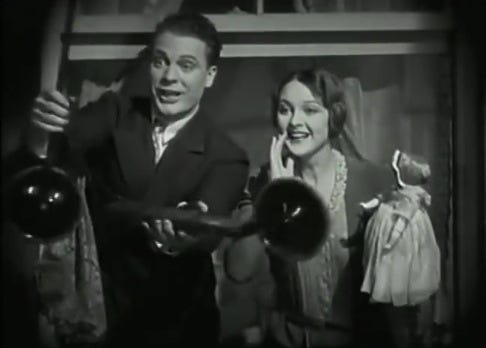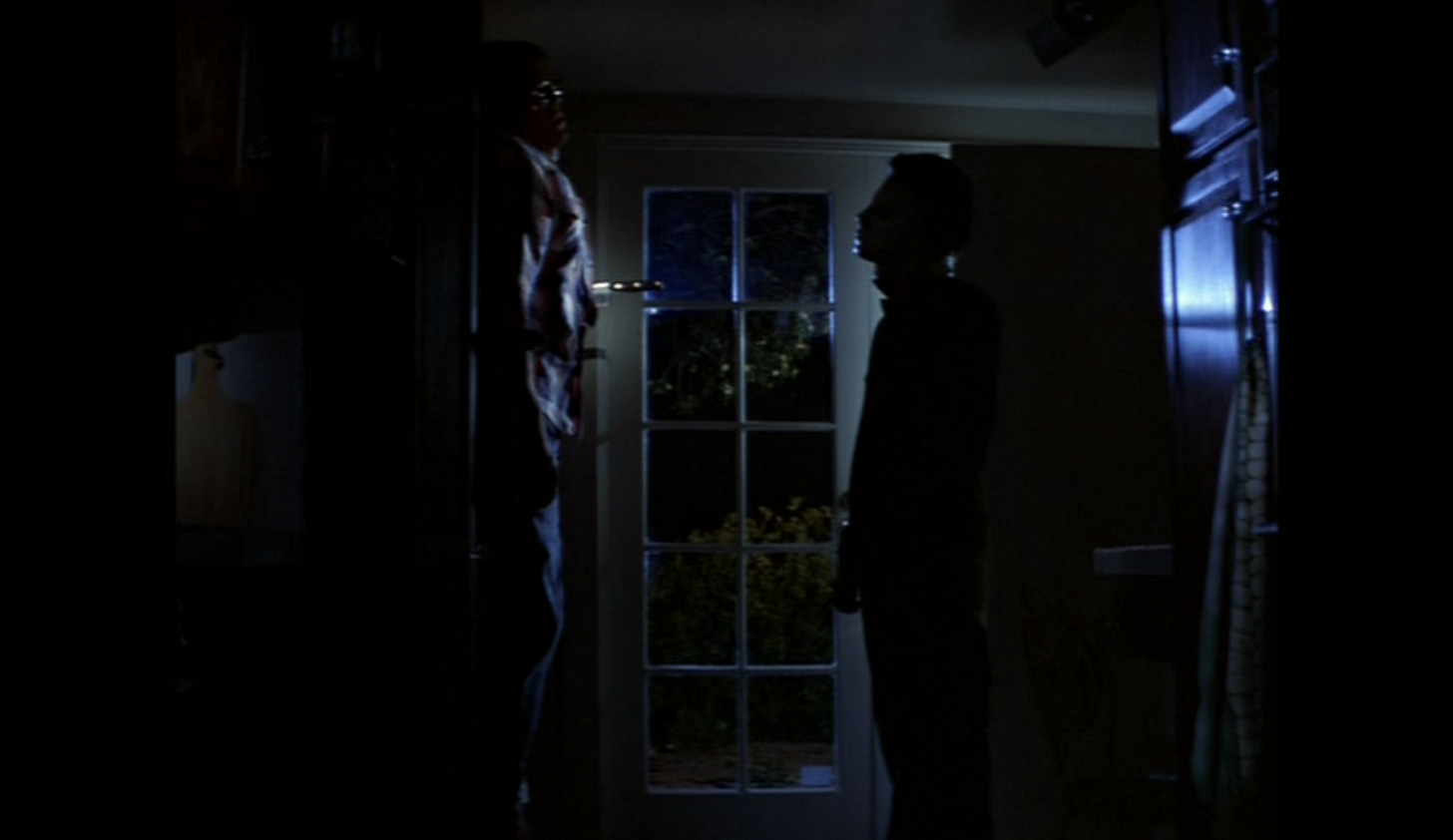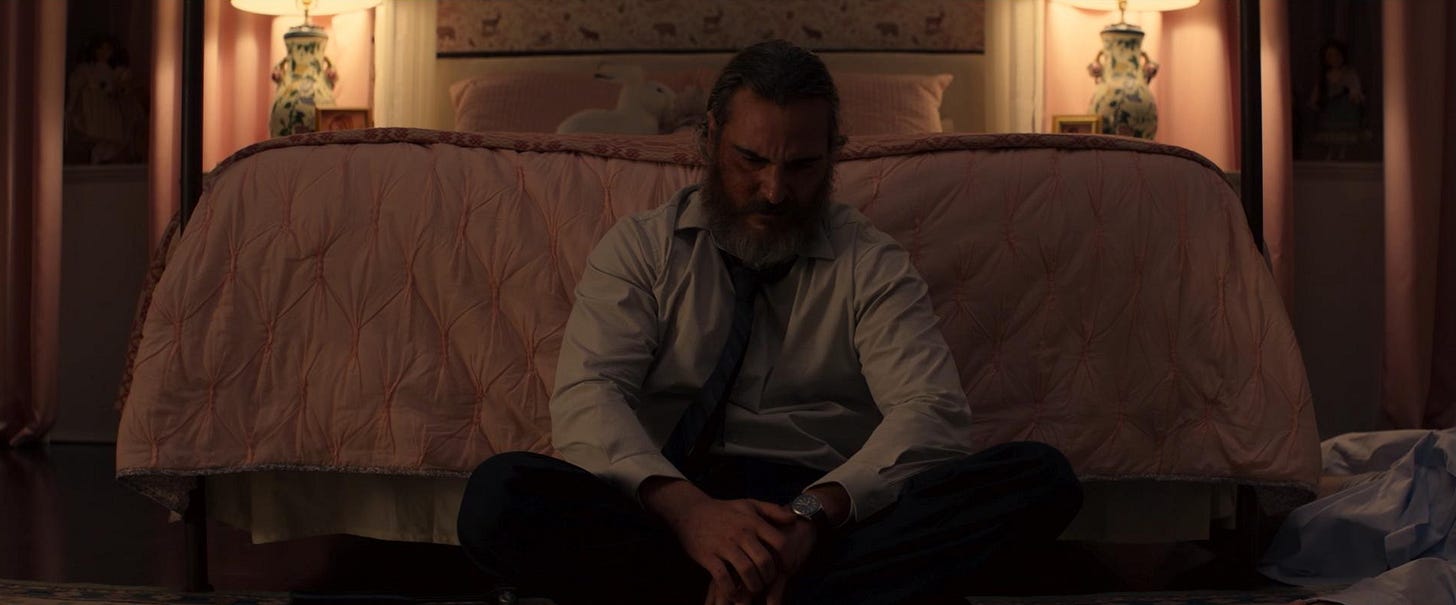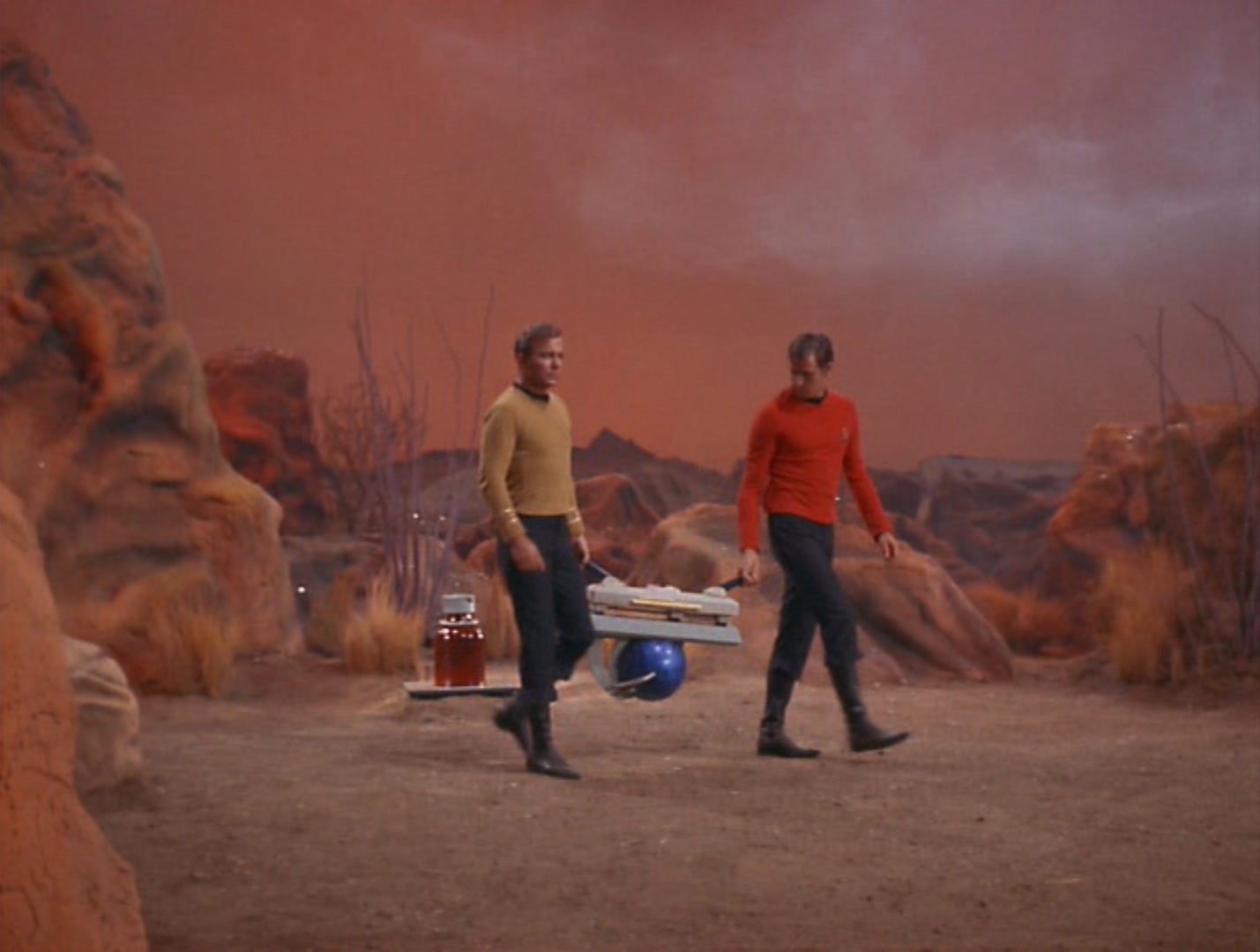Picturegoer Vol. 3 Issue 22 - "Superman" (with "Bullets Over Broadway", "The Crowd", "Halloween", "You Were Never Really Here" and "Star Trek")
Superman (2025, d. James Gunn) The Man of Steel (David Corenswet) is ensnared in a fiendish plot by the villainous Lex Luthor (Nicholas Hoult).
Moving faster than a speeding bullet and hitting with the blunt impact of a powerful locomotive, “Superman” plays like the classic comic character’s mythos re-envisioned as a pop punk burst of sound and fury. Resetting from the ponderous grandeur of Zack Snyder’s approach to the character in “Man of Steel”, writer/director James Gunn approaches his Superman with a “turn it up to 11” intensity. The result is a movie virtually bursting at the seams, an explosion of action and humor and super heroics that is undeniably diverting, but also rather shallow, never slowing down long enough to engage with its most interesting ideas.
“Superman”, intended to kick off yet another incarnation of the DC Comics universe on screen, begins “in media res”. Rather than backtracking to show us Superman’s origin yet again, Gunn assumes we’ve seen a Superman movie before: Gunn’s “Big Blue Boyscout”, alias mild mannered reporter Clark Kent (played with earnest sincerity by David Corenswet) has been doing this superhero thing for approximately three years, he’s secretly dating fellow newswoman Lois Lane (Rachel Brosnahan, perfect casting), and he’s earned the enmity of slimy business mogul Lex Luthor (Nicholas Hoult). Oh, and Superman has a dog now, too – Krypto, an energetic, ill begaved intergalactic canine who is cute and chaotic in equal measure. (Any dog lover will recognize the moments of mixed affection and frustration when Krypto, meaning no harm, nonetheless leaves destruction in his wake; there’s a great moment in the third act when the pup’s destructiveness finally becomes a help and not a hindrance.)
Introducing Krypto is a clear sign that Gunn wants to embrace the silliness of the source material, rather than running away from it. Released several decades into the ascendancy of the superhero movie, “Superman” is packed to the gills with oddball elements that were once thought “too weird” for the average audience member to “get”. Superman has an ongoing rivalry with the members of the self monikered “Justice Gang” – Green Lantern Guy Gardener (an obnoxious blowhard with a terrible haircut, perfectly played with boorish relish by Nathan Fillion), Hawkgirl (Isabela Merced) and Mr. Terrific (who as played by Edi Gathegi ends up stealing most of his scenes). Charmingly goofy robots act as guards at Superman’s Fortress of Solitude; city wrecking kaiju and inter-dimensional imps appear as throwaway details that Gunn expects us to absorb more than understand.
You could argue that this “throw in the kitchen sink” storytelling approach approximates the sensation many of us had reading superhero comics for the first time as kids, being overwhelmed by a barrage of strange names and goofy costumes; you could also argue that Gunn had thrown so many elements into his stew that it’s overloaded rather than rich. “Superman” is almost as easily distracted as Krypto; the film moves so fast that there’s virtually no room for the little moments of character and humanity that make the best superhero movies work, the story’s few slower scenes virtually drowned out by the barrage of sensation surrounding them. (This film makes one gigantic change to Superman’s origin story that should feel Earth shattering, but lands with barely a whimper – Superman is so busy running from skirmish to skirmish that there’s no time for his emotional catharsis to land.)
Virtually all of the dialogue is lumbering and leaden, or declamatory statements of intent that the characters all but deliver straight to camera. Again, you could argue that this captures the spirit of classic comic book dialogue, where characters announced everything they were thinking and feeling in bold, upper case text. But even Stan Lee at his most time-pressed was able to write better dialogue than this; “Superman”’s plot is so busy that there’s no room in the dialogue for cleverness or wit, just blunt force exposition. (As Lex Luthor, Nicholas Hoult is stuck with particularly unplayable dialogue – granted, this is a character known for his braggadocious grandstanding, but even by those standards, Gunn gives him so many airless, pointless monologues that I wanted to yell at the screen “WHO is he TALKING to?!”). Gunn’s visual approach is just as scattershot as his screenwriting. As lensed by cinematographer Henry Braham, “Superman” is largely shot with wide lenses that sometimes lend extra dynamism to the character’s movements, but just as often result in ugly, distorted images, where every imperfection in the spotty CGI is magnified.
If what you’re looking for is summer spectacle, “Superman” does a decent job of applying the Marvel formula to DC’s biggest power hitter – it’s light and funny and slightly scatterbrained, its cast chummily charming, its action often a blur of visual noise, its “big ideas” hand waived away for the sake of a sensational climax. Like the equivalent Marvel movies from a decade ago that trafficked in “War on Terror” adjacent imagery without having anything to say about it, “Superman” brings up some potent sociopolitical ideas – a “pocket universe” prison that is essentially an intergalactic GITMO, a Superman who is told his alien status doesn’t entitle him to “human rights” of any kind, a well played discussion between Lois and Clark early about the limits of Superman’s ability to intervene in foreign wars – and then discards them because, after all, we have to get to a third act where Superman has something he can punch, and foreign interventionism is fine actually when an ubermensch with a nice smile does it. (It’s also kind of low-key weird that a movie that Gunn himself has described as an “immigrant story” – an observation about Superman that is at least half a century old but somehow sent conservative pundits into a titter – has a message that could ultimately be read as “If you’re an immigrant, abandon your old culture and assimilate as thoroughly as possible”, and that an apparently progressively minded blockbuster would have a female character that makes Valerine Perrine’s arm candy hench-woman from the 1978 Superman movie seem like a model of feminist characterization.)
“Superman” is undeniably a rollicking good time, a fun diversion; whether it’s good is a trickier question to answer. Screenwriter Tom Mankiewicz, who worked to shape the script of the original 1978 “Superman” — still one of the crowning achievements of the genre — once said that the danger with that original film was that it would end up being “a piece of icing with no cake underneath”. That’s basically what Gunn has given us – all sugar rush, no substance. **1/2 out of *****
Bullets Over Broadway (1994, d. Woody Allen) Fizzy comedy set in 1928, about an earnest playwright (John Cusack) whose latest work is bankrolled by a gangster on the proviso that the gangster’s girlfriend (Jennifer Tilly) be given a role. When one of the gangster’s men (Chazz Palminteri) is assigned to accompany the moll to rehearsals, he reveals heretofore unknown dramatic gifts, “punching up” Cusack’s script.
Co-written with Douglas McGrath, “Bullets Over Broadway” takes a while to get to its central comic conceit – the early sections of the movie, as Cusack pulls together his team of slightly eccentric actors for his big Broadway break, are amusing but familiar – but once it does, it really clicks into gear. The idea of, in essence, a hoodlum who can out-write Clifford Odets is pretty inspired, and in their scenes together, Chazz Palminteri and Cusack milk the idea for both its pathos and its comedy. Cusack’s character, introduced as an idealist, eventually has to become the voice of reason, trying to talk down Palminteri – having had the soul of an artist awakened in him, the hood suddenly, dangerously insists on making changes to the production that will make it better, yes, but might get both men killed.
These two central characters are surrounded by a wonderful ensemble: Jack Warden as the overworked producer, Rob Reiner as Cusack’s treacherous friend (he’s basically Sy Ableman before Sy Ableman), Jim Broadbent as a leading actor who ninhr eats from stress and balloons over the course of the production, Jennifer Tilly as the ditzy gangster’s moll (it should be a hackneyed part, but Tilly “gives it both knees”, as they say – her version of “bad acting” is up there with Julianne Moore in “Boogie Nights”) and especially Dianne Wiest as the Broadway grande dame who brings her talent and her ego to bear as the star as Cusack’s production. Wiest deservedly won an Oscar for playing this part – Talulah Bankhead, Norma Desmond and Theda Bara all rolled up in one – and it’s remarkable watching an actress normally associated with neurosis so fully inhabit the skin of this flamboyant cartoon character. (Only Tracey Ullman feels misused as another member of the ensemble – her “working class gal” schtick isn’t delineated clearly enough from Tilly’s character, and one ends up feeling they could’ve just merged the two roles together at the script stage without losing anything.)
“Bullets” was perhaps slightly overpraised on initial release – reading some reviews and interviews from that time, it feels like certain critics (Roger Ebert in particular) were happy and relieved to be praising a Woody Allen movie so soon after controversy tore his life apart – but it’s a charming comedy nonetheless, and in Palminteri’s Chazz has one of the more nuanced characters in an Allen comedy. ***1/2 out of *****
The Crowd (1928, d. King Vidor) Silent drama about an “ordinary” man and woman (James Murray and Eleanor Boardman) who face triumph, tragedy, love and heartbreak as they struggle to stand out from “the crowd”.
We all star in the movies of our own lives. To paraphrase Roger Ebert, we see the events of our lives as ongoing dramas; death terrifies in part because it’s a final curtain. The bittersweet truth, of course, is that if there is a story to life, most of us are bit players at best; the story doesn’t end when we die, just as it didn’t begin when we were born. It’s easy to be depressed by this, because many of us, weened on the influence of the movies, are brought up identifying with heroes, with titans, with “extraordinary” people. The idea that most of us might be ordinary – might lead ordinary lives, in which we experience some success and some tragedy but mostly come out even – is existentially terrifying. Maybe that accounts for why many react so negatively to films about “ordinary people”. “Why would I go watch a movie about that when I could just sit in my kitchen?” I remember a college classmate griping about De Sica’s “Umberto D.”; we’re brought up to think our lives only have meaning if they’re exceptional.
King Vidor was one of the top directors in Hollywood, coming off the massive critical and box office success of “The Big Parade”, when he pitched the idea of “The Crowd” to MGM. It was, Vidor admitted, an experimental idea – to tell the story of an “ordinary” man and woman, with few melodramatic flourishes. Louis B. Mayer wasn’t wild about the idea, but Irving Thalberg approved it on the proviso that “MGM is making enough money that they can afford an experimental film every once in a while”. “The Crowd” would prove only a modest success at best at the box office, but as time passed it became renowned as one of the true masterpieces of the silent era, made at a time when, in Vidor’s own view, the silent form had achieved a kind of perfection; a new language had been created that allowed filmmakers to tell emotional, compelling stories without either the broad pantomime of the earliest silent films or the cumbersome weight of dialogue. Today the film is more renowned that seen. After a LaserDisc and VHS release in the 1980s, “The Crowd” has never been legally available on home video, partially because of rights issues (the film finally fell into the public domain in 2024) and partially because of lack of restorable materials.
Variety sniffily dismissed “The Crowd” by saying that it was “a drab actionless story of ungodly length and apparently telling nothing”, but in fact there’s plenty of drama in the story of “The Crowd”. What is true is that the film focuses on the struggles of everyday people. John and Mary Sims – even their names sound generic – are pleasant but not particularly exceptional; James Murray’s John is raised being told by his father that he’ll “make something some day”, and he grows up with the vague notion that he’s certain to strike it rich somehow, but from what we see he’s a perfectly mediocre man – not overly gifted, pleasant, loving, but too easily discouraged by set backs. If he has a flaw, it’s the quintessential American flaw of believing that he’s destined to be great just “because”: financial success, a nice house for his family and nice things for his wife, are bound to materialize because he’s dreamed them. As Mary, Eleanor Boardman is purposefully made up to look “plain”, although the actress’ performance is so luminous it shines through the de-glam treatment; she’s the life force of the movie and of the family, supportive of her husband even after a terrible tragedy strikes, and he sinks into a deadening depressive cycle where he refuses to hold any job for more than a day. (Vidor and Boardman were married at the time.)
The third main character of the film is the crowd of the title. Vidor’s staging of scenes constantly emphasizes John and Mary are just one of multitudes: the crowd that gathers on the street outside young Johnny’s childhood home when his father unexpectedly dies (young Johnny ascends the stairs in a shot so stylized it calls ahead to “Citizen Kane”); the crowd of identical looking workers at the insurance company where Johnny works (in a shot that Billy Wilder directly referenced in “The Apartment”); the crowd of onlookers who gawk when tragedy strikes the Sims family. (It’s beyond humbling – it’s humiliating and painful – to realize that your own personal crisis will not stop the turning of the Earth; as one intertitle reads, “the crowd laughs with you always… but will cry with you for only a day”.) “The Crowd” keeps the Sims’ personal drama in perspective while also making it the center of this cinematic world, a dramatic feat that is not to be sniffed at.
Vidor stages early scenes almost for slapstick comedy (as he arrives in New York, a young boy on the make, Murray’s John could almost be a version of Harold Lloyd’s irrepressible “Glasses” character, painfully taught the lesson that everything is not attainable thru a positive attitude), and makes three hanky stuff out of the third act scene where a child’s faith is enough to lift John – at least briefly – out of his paralyzing depression.
“The Crowd”’s final scene has another crowd, a self reflexive one – a theater audience, laughing uproariously at a stage performance. The camera cranes back, almost vertiginously, from the Sims, and they become part of the “crowd” – and then in a moment that presages the final shot of “Wolf of Wall Street”, an overhead shot makes the theater audience remind us of us, sitting in the dark – the movie audience. MGM apparently considered this a “downer” ending, and a “happy” ending with the family in front of a Christmas tree was shot for use by some exhibitors. The true ending of “The Crowd” is ambivalent and open ended, certainly, but I’m not certain it’s inherently “downbeat”. John and Mary have gone through tribulations, but at the end they’re at least together, laughing, in a respite from their miseries. Our individual lives aren’t the beginning and end of the story. We’re only part of the crowd. **** out of *****
Halloween (1978, d. John Carpenter) Prototype “slasher movie” set on the titular holiday, “the night he came home” as the original ad line put it – “he” in this case is Michael Meyers, institutionalized 15 years earlier for murdering his sister, now returning to his home town of Haddonfield to stalk a trio of babysitters (particularly bookish “good girl” Laurie Strode, played by Jamie Lee Curtis in her movie debut).
Made for less than a half a million dollars, “Halloween” went on to become possibly the most successful independent film of all time just in terms of dollars spent to dollars earned, and inaugurated the whole slasher genre. While there are important antecedents, “Texas Chainsaw Massacre” and “Black Christmas” chief among them, “Halloween” is the film that codified the form, setting in stone a list of “rules” that Freddy, Jason, and the others would feel duty bound to abide by.
So it’s time for me to make an embarrassing admission: I don’t much like “Halloween”. Granted, slasher films aren’t really my cup of tea – I like the aforementioned “Black Christmas” quite a lot, I think the original “Nightmare on Elm Street” is OK, and I enjoyed the first “Scream” in its winking way, but that’s about it – so take what I’m about to say with a grain of salt: “Halloween”, while clearly better made than some of its ilk (putting this next to the original “Friday the 13th” is an embarrassing exercise for the latter film), is still kinda slow and clunky. John Carpenter owes the entirety of a truly terrific ‘80s run to the success of this movie, but I find his direction here pretty leaden – scenes slip beyond the point of suspense into a kind of stupor, as we watch teens walk through rooms, down hallways, across streets…zzzzz. The “teen speak” given to PJ Soles and Nancy Loomis as Curtis’ babysitter buddies is embarrassing, and only Donald Pleasance’s inspired overacting makes the feverish Dr. Loomis’ speeches about Michael Meyers’ unholy evil work.
Maybe the knife has just been dulled by too many imitators, but “Halloween” strikes me as kind of quaint, the big “jump” moments telegraphed from a mile away, the effects a bit stagey (when Carpenter ends one early scene with Laurie walking, walking, walking down the sidewalk, shooting past Meyers’ shoulder, the shot goes on so damn long it becomes vaguely comical – Michael spends a lot of this first movie just kinda dickin’ around in broad daylight, and you’d think somebody would at least, like, come out on their porch and yell at him to get off their lawn). For every bit that works – a creepy moment where Meyers looks up at a pinioned kill as though he’s a bug on a board, Carpenter’s immensely creepy opening title theme, the great widescreen shot where Meyers suddenly sits up, unnoticed, behind Laurie, that creepy final montage – there’s another that has aged like milk – the ambitious but clumsy opening Steadicam shot, where Michael seems to kill his sister by vaguely flailing at her shoulder; the badly staged stealing of the car/assault on a nurse. Maybe I just have no (dark) poetry in my soul, but I’ve tried, really I have, and this one, I think, is an antique – culturally significant, but not exactly deathless. **1/2 out of *****
You Were Never Really Here (2017, d. Lynne Ramsay) A freelance tough guy (Joaquin Phoenix) runs afoul of very powerful people.
“You Were Never Really Here” was adapted from a novella by Jonathan Ames, but feels like it should’ve been adapted from a comic book. The world of this movie is as stylized as that of “John Wick”, the grimy set dressing a façade for a heightened world of extreme violence and extremely violent men; Joaquin Phoenix’s secretive sometime-gumshoe, sometime-enforcer, sometime-hitman is able at times to disappear before our eyes, like Batman. The film’s villains are a group of powerful elites engaging in child sex trafficking, but somehow that world always feels abstract, rendered in the broad, basic terms of a DTV action thriller; the poppy colors and neon aesthetic of Thomas Townend’s cinematography feel mannered.
Director Lynne Ramsay certainly brings an admirable precision to “You Were Never Really Here" – her choices about where to put the camera, what to see and not see, always feel deliberate. And Joaquin Phoenix is committed in the lead role. His physicality is fascinating – with big chest, big gut and strong but flabby arms, he doesn’t look like the movie cliché of a hitman, but rather like a wounded bear, fierce but sloppy. But somehow “You Were Never Really Here”, while efficient, never becomes more than the sum of its genre parts. I love genre pictures, and have a particular yen for no nonsense crime films that strip the genre down to its essence; but “You Were Never Really Here” struck me, aside from a few original touches (a “storming the fortress” scene that is shot mostly through static, dispassionate security cameras; an oddly human moment where a dying man and his killer join hands) to walk a dissatisfying middle ground between pure pulp and arty deconstruction. The picture has been compared to “Taxi Driver”, and there are indeed similarities in the way it views its wounded male hero as he tries to redeem himself thru violence; but the genre elements ultimately make the film feel like a version of “Taxi Driver” that turns into “Death Wish”, where we’re rooting for Travis Bickle to get Jodie Foster in the end. It’s an odd mixture. *** out of *****
THIS WEEK! THE LATEST INSTALLMENT IN AN ONGOING SERIES ON THE ORIGINAL ADVENTURES OF THE STARSHIP ENTERPRISE!
“Star Trek” Season 2 Episode 13: “Obsession”
Kirk becomes…well, obsessed with destroying a cloud-like entity, even at the risk of the Enterprise and her crew.
An attempt to show a more complicated side of Captain Kirk, “Obsession” ends up only intermittently satisfying. The basic premise is essentially “Moby Dick” with Kirk as Ahab; a mysterious entity (which Kirk encountered once many years before) has left several Enterprise crew members dead, and despite the fact that the Enterprise is carrying medicines which could be vital to the survival of another planet, Kirk insists on pursuing this entity, at serious risk to both the stability of the ship and the safety of his crew.
Not a bad premise at all: but “Obsession” suffers because the entity itself is another of ‘60s Trek’s fairly regular “amorphous multi-color blob” antagonists – it doesn’t become much more threatening when it turns into dry ice fog pumped thru the ship vents – and because the episode is so talky and humorless. Shatner is unfortunately at his worst here, somehow simultaneously hammy and wooden, and writer Art Wallace can’t seem to decide just how far to push Kirk’s character. When Spock and Bones confront Kirk, questioning his ability to command under present circumstances, Kirk commends them both for their courage – a very Kirk-like thing to do, but it kind of deflates the drama of the episode, where we’re supposed to believe that Kirk might actually go “too far”.
“Obsession” to its credit gets better as it goes. Nurse Chapel, of all characters, gets a nice beat about midway thru, and once the episode becomes about the Enterprise crew trying to troubleshoot solutions, the train gets back on the track. But one still has the feeling that many of these same basic dramatic ideas have been explored elsewhere, better, by other “Trek” episodes. This one’s a near miss. **1/2 out of ****
NEXT ISSUE: Arnold Schwarzenegger goes to Mars, Chaplin does parody, and a long under-seen ‘70s masterwork.










